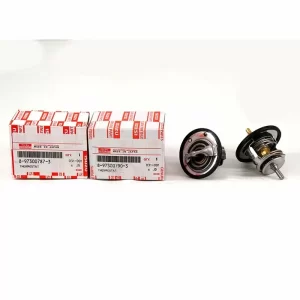El termostato es un dispositivo ubicuo que funciona silenciosamente en nuestros hogares, oficinas y muchas otras estructuras. Es una herramienta fundamental para mantener un ambiente de temperatura confortable y constante. Para entender su importancia es necesario profundizar en qué es un termostato, cómo funciona y sus diversas aplicaciones.

Un termostato es un dispositivo diseñado para regular la temperatura de un sistema. para que la temperatura del sistema se mantenga cerca del punto de ajuste deseado. Para ello, detecta la temperatura de un sistema y realiza ajustes para garantizar que la temperatura del sistema permanezca lo más cerca posible del punto de ajuste.
El funcionamiento del termostato se basa en el principio de control por retroalimentación. Básicamente, un sensor dentro del termostato mide la temperatura actual. Luego, esta información se compara con la temperatura deseada (el punto de ajuste). Si la temperatura actual se desvía del punto de ajuste, el termostato envía una señal a un calentador o aire acondicionado para aumentar o disminuir la temperatura.
La historia del termostato se remonta al siglo XVII, cuando el inventor holandés Cornelis Drebbel desarrolló un termostato de mercurio para controlar la temperatura en una incubadora de pollos. El termostato moderno, tal como lo conocemos hoy, fue inventado en el siglo XIX por el científico escocés Andrew Ure. Desarrolló un termostato de tira bimetálica que se utilizó para regular la temperatura en las fábricas textiles.
Con el paso de los años, los termostatos han evolucionado significativamente. Los primeros modelos eran dispositivos mecánicos simples, pero los termostatos actuales suelen ser digitales y programables, lo que permite a los usuarios establecer diferentes temperaturas para diferentes momentos del día. Esta característica no sólo mejora el confort sino que también mejora la eficiencia energética, lo que genera ahorros de costes.
Los termostatos encuentran uso en diversas aplicaciones. En hogares y oficinas, controlan el funcionamiento de los sistemas de calefacción, ventilación y aire acondicionado (HVAC). También se utilizan en frigoríficos y hornos para mantener una temperatura constante. En entornos industriales, los termostatos se utilizan en procesos que requieren un control preciso de la temperatura, como en la fabricación de semiconductores o productos farmacéuticos.
La llegada de los termostatos inteligentes ha supuesto un nuevo nivel de comodidad y eficiencia. Estos dispositivos se pueden controlar de forma remota mediante un teléfono inteligente o una computadora, lo que permite a los usuarios ajustar la temperatura de su hogar incluso cuando no están presentes. Los termostatos inteligentes también pueden aprender los hábitos del usuario y ajustar la temperatura en consecuencia, lo que genera mayores ahorros de energía.
A pesar de su sencillez, los termostatos desempeñan un papel crucial en nuestra vida diaria. Nos proporcionan la capacidad de controlar la temperatura de nuestro entorno, garantizando confort y seguridad. Además, con la llegada de los termostatos inteligentes y programables, ahora podemos hacerlo con mayor eficiencia y comodidad.
En conclusión, el termostato es un invento notable. Es un ejemplo perfecto de cómo un dispositivo simple, basado en principios científicos fundamentales, puede tener un profundo impacto en nuestras vidas. A medida que nuestra comprensión de la tecnología y la sostenibilidad ambiental continúa creciendo, es probable que el humilde termostato continúe evolucionando, proporcionando un control aún mayor sobre la temperatura de nuestro medio ambiente y desempeñando un papel clave en nuestros esfuerzos por conservar energía.


